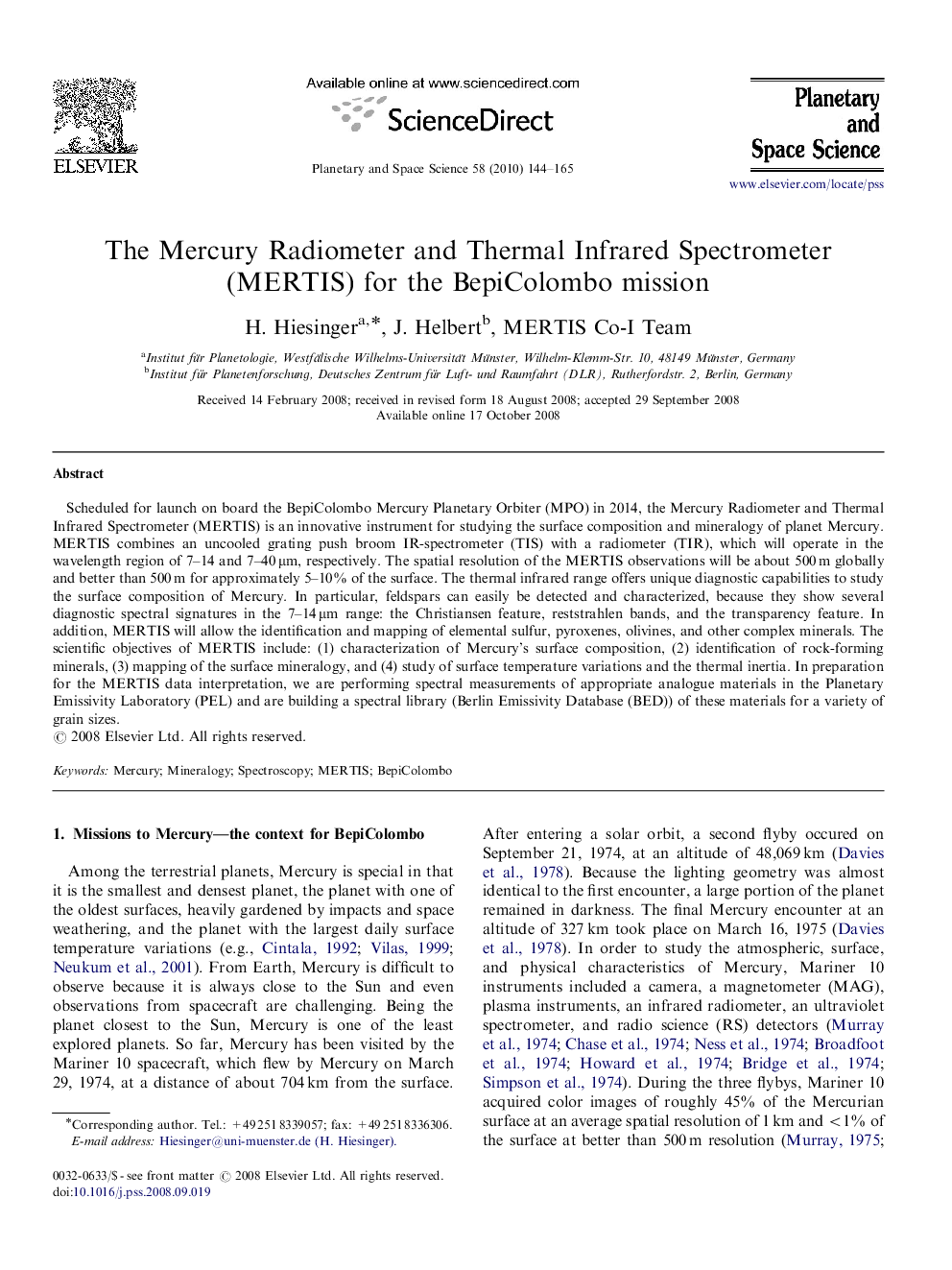| کد مقاله | کد نشریه | سال انتشار | مقاله انگلیسی | نسخه تمام متن |
|---|---|---|---|---|
| 1782269 | 1523968 | 2010 | 22 صفحه PDF | دانلود رایگان |

Scheduled for launch on board the BepiColombo Mercury Planetary Orbiter (MPO) in 2014, the Mercury Radiometer and Thermal Infrared Spectrometer (MERTIS) is an innovative instrument for studying the surface composition and mineralogy of planet Mercury. MERTIS combines an uncooled grating push broom IR-spectrometer (TIS) with a radiometer (TIR), which will operate in the wavelength region of 7–14 and 7–40 μm, respectively. The spatial resolution of the MERTIS observations will be about 500 m globally and better than 500 m for approximately 5–10% of the surface. The thermal infrared range offers unique diagnostic capabilities to study the surface composition of Mercury. In particular, feldspars can easily be detected and characterized, because they show several diagnostic spectral signatures in the 7–14 μm range: the Christiansen feature, reststrahlen bands, and the transparency feature. In addition, MERTIS will allow the identification and mapping of elemental sulfur, pyroxenes, olivines, and other complex minerals. The scientific objectives of MERTIS include: (1) characterization of Mercury's surface composition, (2) identification of rock-forming minerals, (3) mapping of the surface mineralogy, and (4) study of surface temperature variations and the thermal inertia. In preparation for the MERTIS data interpretation, we are performing spectral measurements of appropriate analogue materials in the Planetary Emissivity Laboratory (PEL) and are building a spectral library (Berlin Emissivity Database (BED)) of these materials for a variety of grain sizes.
Journal: Planetary and Space Science - Volume 58, Issues 1–2, January 2010, Pages 144–165